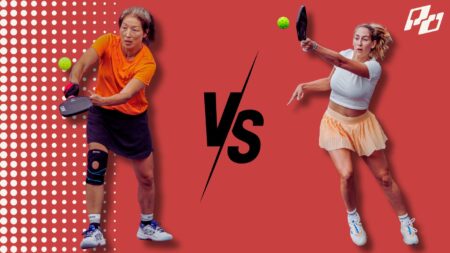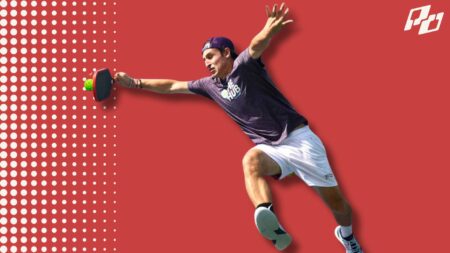

If you’re floating around the 3.0 level, first off—congrats! You’ve moved past the early chaos, you know the rules, and you’ve probably even mastered a few go-to shots. But now you’re ready for the next layer of the game: strategy.
This isn’t about hitting harder or running faster. It’s about seeing the game better.
That’s where Pickleball Union’s Coach Marko Grgic comes in. He breaks down three things every 3.0 player should start noticing if they want to level up.
Because once you learn to read your opponents—even just a little—you stop reacting, and start dictating.
Watch Coach Marko Break It Down
Coach Marko Grgic walks through these exact tips—where to serve, how to attack positioning, and how to jam opponents who live on the backhand—in a quick, practical video:
1. Watch Where They Stand on the Serve
What to Look For:
When your opponent is getting ready to return your serve, check where they’re standing relative to the baseline.
If they’re standing just a foot or two in front of the baseline… that’s your cue.
Why It Matters:
Players who start just behind the baseline are often preparing to step into the return and take it early. That gives them an edge—unless you make them move backward. A deep serve forces them to hit off their back foot, which often leads to:
- Popped-up returns
- Mishits
- Short balls that set you up for a killer third shot drop or drive
What to Do:
- Assess where the returner is positioned before you serve.
- Target the last third of the service box with depth and consistency.
- Use higher ball flight to clear the net and land deep, especially under pressure.
What If They’re Standing Way Behind the Baseline?
Some players hang way back to buy time for a big swing. Here’s how to make them pay:
- Aim for larger targets in the service box to make them move laterally. This delays their forward momentum.
- Use a slice or shorter serve now and then to pull them in and break their rhythm.
2. Read Their Position at the Kitchen Line
What to Look For:
Once you’re both up at the kitchen line, check their positioning.
If they’re lingering 1–2 feet behind the line instead of right at it, they’re vulnerable.
Why It Matters:
Standing off the NVZ might feel safer, but it opens the door to:
- Attacks at their feet
- Difficulty handling fast volleys
- Mistimed resets
What to Do:
- Aim low and fast at their shoelaces.
- Use roll volleys or dipping dinks that land just short, forcing them to reach forward.
If they’re off-balance, you’re in control.
What If They’re Hugging the Line Like a Pro?
You’ve got to work a little harder.
- Use crosscourt dinks to pull them out wide.
- Mix in lob dinks or quick speedups to test their hands.
- Look for their recovery footwork—if it’s sloppy, that’s your next opening.
3. Track Their Paddle Position at the Net
What to Look For:
When your opponent is waiting at the NVZ, is their paddle parked in one spot?
If they’re frozen in a backhand block position (common for rec players), you’ve got options.
Why It Matters:
If a player defaults to a backhand block, it usually means:
- They’re less confident with their forehand
- They’re in a reactive mindset
Either way, it’s your chance to attack.
What to Do:
- Target the right shoulder or hip (for right-handed players)—tricky zones for quick blocks.
- Use quick, compact speedups to take away time and challenge their reaction.
What If Their Paddle Is in a Good “Ready” Position?
Props to them—but keep testing. Try:
- Changing the pace or direction of your dinks
- Throwing in a no-look or shoulder fake before speeding up
- Use spin to shape the ball into awkward angles
Bonus Tip: Stack These Advantages
All of these reads—return positioning, NVZ habits, paddle cues—can be layered into one sequence. For example:
- Deep serve → opponent backs up → short return
- Third shot drop → opponent hangs off the NVZ
- Roll volley to their feet → pop-up
- Speedup to the shoulder → point won
You didn’t hit harder—you saw more.
Train Your Eyes Before Your Hands
At the 3.0 level, most players focus on improving technique—and that’s important. But the ones who start thinking tactically? They jump to 3.5 and beyond much faster.
Start noticing. Start adjusting. Build patterns based on what your opponents give you.
And if you’re not sure what to look for?
Just ask:
“What’s the easiest shot they could miss right now?”
Then give them that shot.
Happy pickling!




